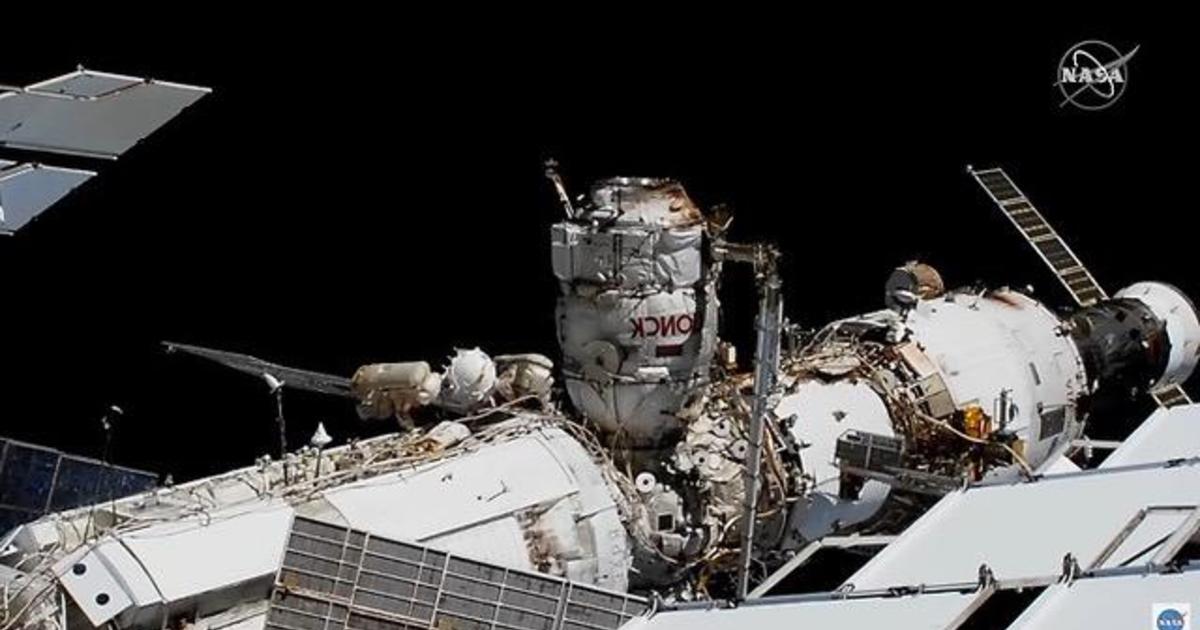Two Russian astronauts, in bulky spacesuits, used the Poisk docking booth on the International Space Station as an airlock for the first time on a Wednesday spacewalk to begin preparing the nearly identical Pirs unit for removal next year. A new lab unit will be placed in place at a later time.
Commander of Flight 64, Sergey Rijikov and Sergey Kud-Svershkov, began this year’s eighth space walk at 10:12 a.m. EST. The flight, the first for both astronauts, comes just two days later Four astronauts arrive On board a SpaceX Crew Dragon commercial ferry ship.
For identification, Ryzhikov, the EV-1 call sign, wears a red striped space suit and uses a 20 helmet camera while Kud-Sverchkov, an EV-2, wears a blue striped suit and an 18 helmet camera.
Poisk launched approximately 11 years ago, on November 10, 2009, and was plugged into the overhead port of the Zvezda unit two days later. It has been used as a docking port for unmanned Progress cargo carriers and Soyuz crew ferry ships several times but not as an airlock.
NASA
Before venturing outside, the astronauts spent about an hour making sure that the previously unused Poisk side hatch could be opened and closed safely with an airtight seal and that the hatch leading to the station’s main body was free of leakage when the cabin was in or near the void.
Dressed in their Orlan spacesuits, Ryzhikov and Kud-Sverchkov partially depress Poisk for an initial round of leak checks. NASA colleague Kate Robins conducted similar tests from inside the Russian part of the station.
Astronauts then took Poisk to vacuum, opened the side spacewalk hatch for the first time in the unit’s history and examined its seals for any signs of debris or UFO damage. Backup sealants are available if needed, but the inspection found no signs of any problem.
Then they closed the hatch and performed additional leak checks before reopening it and floated outside at 11 am straight to begin Spacewalk No. 232 assigned to station assembly and maintenance, the eighth EVA station so far this year.
The first item on the agenda was to replace the fluid flow regulator of the Russian Zarya unit, the station’s first component, which launched 20 years ago on November 20.
The astronauts then planned to retrieve a material science space display platform from the Pirs unit and disconnect the telemetry cable. The cable will be reconnected to Poisk, initiating the process of decommissioning Pirs as airlock.
After cleaning a window on the Zvezda module, the astronauts planned to reposition the missile shaft collision detector and restore an experiment tray that helps engineers assess meteorite minute impacts. Their last task is to photograph the exterior of the Russian part.













































